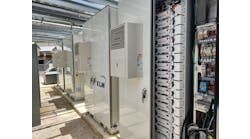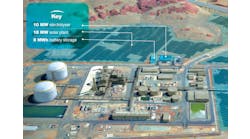Microgrids to Become the Standard in Decentralized Power Generation, Not the Exception
According to Robert Autengruber, senior product manager for INNIO Group’s Jenbacher product line, microgrids are poised to become the standard in decentralized power generation, not the exception. He recently sat down with Rod Walton, managing editor of Microgrid Knowledge, and explained why.
INNIO Group provides energy solutions through its two brands, Jenbacher and Waukesha. Perhaps best known for its stand-alone generator sets that operate on a wide range of energy sources, including natural gas, hydrogen, biogas and biomethane, Jenbacher also offers advanced microgrid controls.
During the interview, Autengruber reported that INNIO is seeing increasing demand for microgrids.
He told Walton that he sees several high level megatrends driving value in the microgrid market, including the increased integration of renewables to reduce carbon emissions, peak shaving, optimization of energy use, reliability and resilience.
Autengruber also noted that e-mobility and electric vehicle (EV) charging, in particular bidirectional EV charging, will continue to drive growth in the market.
What is an advanced microgrid?
Autengruber said a consensus definition of a microgrid is hard to nail down, as some in the industry define a plant that is islandable, or able to disconnect from the main power grid, as a microgrid. But INNIO has a different vision of a modern and advanced microgrid, he said.
“For us, the main criteria [for an advanced microgrid is that it] has to address the global megatrends and challenges that we see as part of the energy transition,” he explained.
Autengruber added that, for INNIO, an advanced microgrid consists of “a renewable energy source, an optional battery on top of that [and] … one reliable asset in the mix, and they are all centrally controlled by a microgrid controller. And on top of that [everything is] orchestrated and optimized by an energy management system.”
Defining success
During the wide-ranging interview, Walton and Autengruber discussed the primary factors that lead to successful microgrid installations, starting with understanding the customer’s requirements.
“Every microgrid is different. The business case is really unique to the use case of the customer,” Autengruber said. “Microgrids are complex solutions and thorough planning of the microgrid is really critical for the success.”
Walton and Autengruber also talked about INNIO’s energy management optimization solutions as well as the company’s 360 Energy Lab. Located at INNIO’s Austrian headquarters, the 360 Energy Lab is a real-world demonstration project that not only powers the company’s boiler house but also serves as a test bed for software development and customer microgrid configurations.







